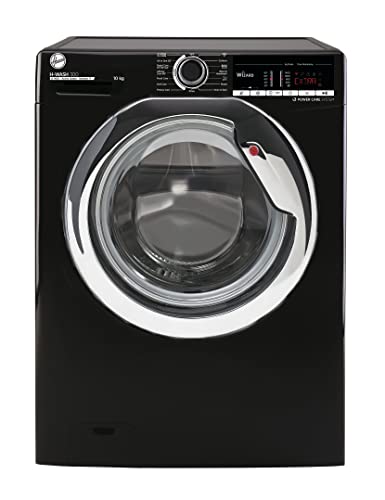Why Buy a 10kg Front Loader?
The 10kg front-loader is perfect for large loads of laundry, with 13 wash programs that include handwash, and plenty of space for big wash cycles. With smart tech and advanced features, it's the perfect partner for your home laundry.
Front loaders are generally slower to wash they are not offered with larger capacities, and are susceptible to mildew or mould. However, they are more efficient in terms of energy and water use than top loaders.
Energy
The primary energy cost of front-loaders is the electricity used to heat water up to operating temperature and run motor. These costs can be offset with lower energy consumption during operation in comparison to top-loaders, including less power used during the agitation cycle as well as during spin, as well as less water. Certain machines come with low-water cycles that consume less water than the cotton cycle. This helps save energy and water.
In 10kg washer machine , front-load washers consume less detergent than top-loaders and the tumbling action inside the drum is able to entrain air which reduces foamy suds and spills without lessening cleaning action. However the door seals and bellows may be more prone to wear than the bellows in top-loaders. In addition, a top-loader's mechanical agitator can cause considerable wear and abrasion to fabrics for clothing, since it presses clothes against one with paddles that constantly drop and drag them through the wash. This abrasion can be gauged by the amount of fabric accumulating in the dryer's lint filter because lint largely consists of loose fibers that have been absorbed by clothing during drying and washing. A lot of top-loaders are designed to run at slower speeds and may include a "freshening cycle" to clean the bellows or mechanical gears frequently.
Water

Top-load washers require an impeller or agitator to push detergent and water through clothes, which creates mechanical wear and abrasion. By contrast, front-loaders use paddles that gently lift and drop clothes into a rotating drum to clean, reducing wear. The rate of such wear can be approximated by the amount of lint that is collected in dryer lint filtering systems, which is largely composed of threads that have escaped from clothing when drying and washing.
Front-loading machines are less likely to leak since they have a lower water level than top-loaders. Front-loaders require a bellows or seal to stop water from entering through the open door. These systems aren't required to be maintained as often as top-loaders.
Additionally, front-loaders are able to operate with hot or cold water and a majority of them without any external heating source, which makes them more energy efficient than most top-loaders. This efficiency can reduce the cost of running the same laundry load, particularly in areas where water, detergent and energy are costly.
